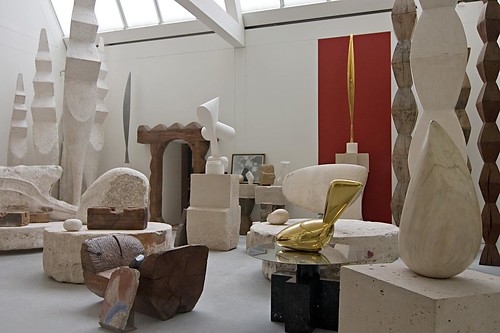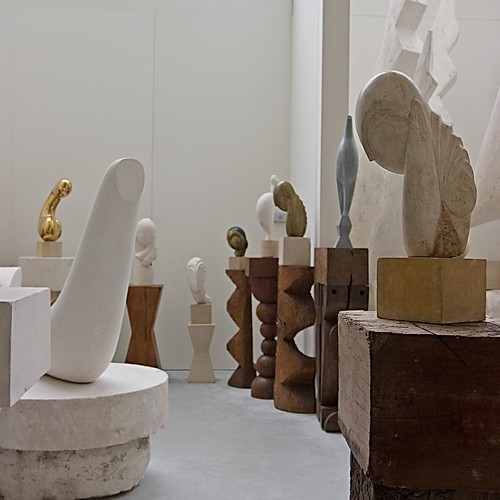I've been trying to synthesize some thoughts on Brancusi, but so far all I can say is I'm glad I was advised to put in the effort to understand his work by a very wise person (and it wasn't this guy).
The atelier Brancusi is in a separate building from the Centre Pompidou, but in the same square. As per Brancusi's wishes, it is an exact recreation of his studio on the day he died. Brancusi spent years making slight adjustments to the position of each piece in the space, believing they were best viewed in unity. In fact, when he sold a piece he would replace it with a plaster model so as not to lose its place in the whole. Thus the atelier provides an endless variety of views of his work, constantly changing as your change your position.

One thing that seems inconsistent to me is his willingness to substitute a plaster model for the original material, which might have been marble, or wood, or bronze. Any one of these materials would make a radical change in the look of the group as a whole, so it seems like he puts more emphasis on shape than in texture and color, even though he claimed that the what he was doing was bringing out the object which already existed in the material.

Two of Brancusi's more famous individual pieces: "The Kiss" and "Torso of a Young Man" (the latter is a plaster model) .
I suppose that's why he spent so much time rearranging, because the position of a plaster element would be different than that of a bronze element. But it still seems strange to me that he would ascribe so much of the life of the artwork to the material from which it came, yet be willing make use of a plaster proxy to represent it in his studio installation.

The original plaster models for Olive Oyl and Iron Man. Who knew?





No comments:
Post a Comment